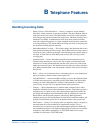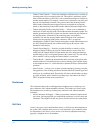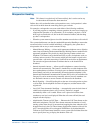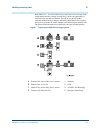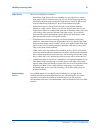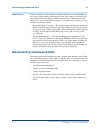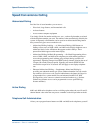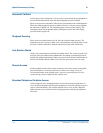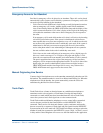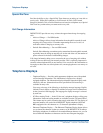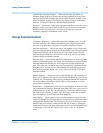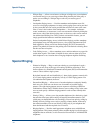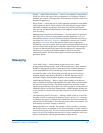
Disconnecting Unanswered Calls B
Overview for Avaya IP600 Internet Protocol Communications Server
555-233-001 — Issue 5 — November 2000
116
Station Hunting Routes calls made to a busy extension to another extension. To use Station Hunting,
you create a station hunting chain that governs the order in which a call routes from
one extension to the next when the called extension is busy. Each extension in the
chain links to only one subsequent extension. An extension may be linked from any
number of extensions, however.
• Station Hunt Before Coverage — This feature changes the interaction that occurs
between station hunting and call coverage. Station Hunt before Coverage causes a
call going to a busy station to go through a station hunting process before going to
coverage. If all the stations in the Hunt group are busy, the call will go to the
coverage path.
• Circular Station Hunting — This new hunt group type is an alternative to the
“ddc” or “hot-seat” algorithm in a hunt group. DEFINITY ECS keeps track of the
last extension in the hunt group that received a call. When another incoming call
arrives, it is sent to the next idle extension, bypassing the extension that had
received the previous call. The first extension in the hunt group will no longer be
the busiest telephone while the others in the group are sitting idle.
Disconnecting Unanswered Calls
Disconnects unanswered outgoing calls after a predetermined amount of time. When
any of the following timers expire during an outgoing local, toll, or international call
attempt, the switch disconnects the call and applies busy tone, which may or may not
be followed by howler tone:
• Pre-dialing and interdigit timer
• Outgoing seizure acknowledge timer
• Answer supervision timer
• 60-, 90-, and 120-second no-answer disconnect timers, based on ARS call type
• 120-second timer used for calls without a call type, such as calls to trunk access
codes.




